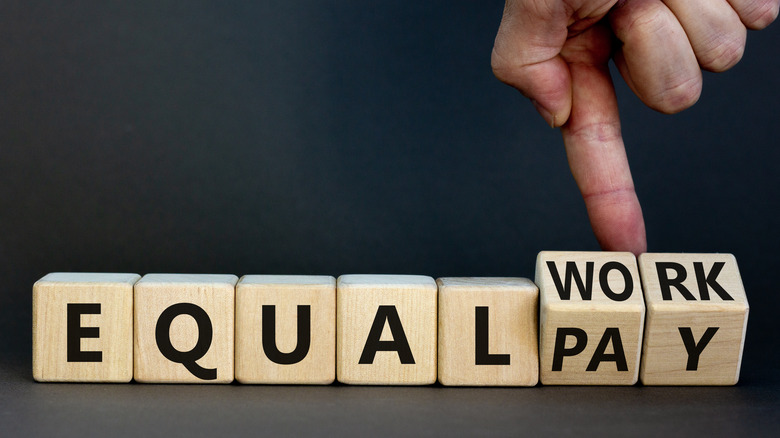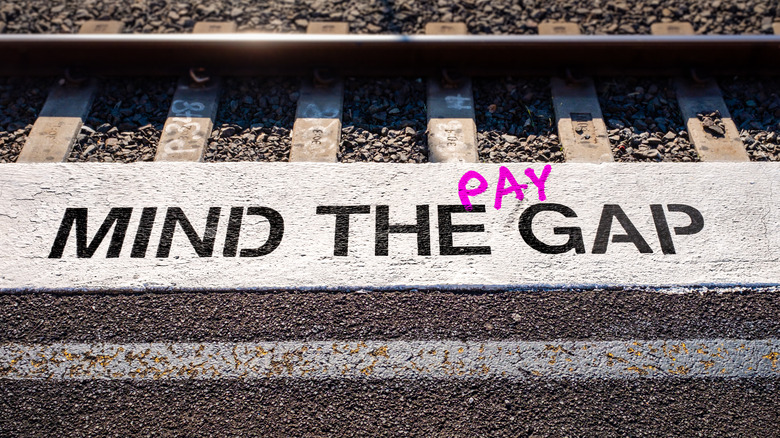Everything You Need To Know About The 2022 Equal Pay Day
Unlike International Women's Day, Equal Pay Day is supposed to change dates every year. The first Equal Pay Day was held on April 11, 1996, and as The 19th News explains, it was a "symbolic day on which women would catch up to the pay White men earned the year before."
The date should be earlier and earlier every year, showing pay inequality decreasing between men and women. When the first Equal Pay Day was observed, women earned "75 cents for every $1 earned by White men," according to The 19th News. 2022 marks the earliest Equal Pay Day has been celebrated. According to The Washington Post, this means that, in 2022, women are earning 83 cents to every man's $1 — the smallest the gap has ever been, at least for white women. At this current rate, pay parity won't happen until 2059 (via The Washington Post).
The pay gap widens when you start factoring in race. The Washington Post reports that in 2020, Black women made "63 percent of what White, non-Hispanic men made," which was down from the year before. Native American and Latinx women both make 50 cents to every man's dollar.
Pay inequality wasn't always the norm, though. During World War I and World War II, the National War Labor Board recognized the fact women were doing the same work as men. "If it shall become necessary to employ women on work ordinarily performed by men," the National War Labor Board said, "they must be allowed equal pay for equal work" (via Time).
This is why we still need an Equal Pay Day in 2022
However, when the World Wars ended and an equal pay amendment was proposed in 1947, it got little to no support — men were home now and wanted their jobs back, Time reports. Since then, there have been some legal protections introduced to help close the gender pay gap. In 2009, then-President Barack Obama signed into law the Lilly Ledbetter Fair Pay Act, which "makes it easier for workers to challenge unequal pay," according to The White House.
Activists are also pushing to raise the minimum wage to $15 an hour. According to The 19th News, a rise in the minimum wage "could raise incomes for 17 million people, many of them women." The mass exit of women from the workforce during the COVID-19 pandemic has shown that women "were overrepresented in the industries hit hardest by the pandemic and ... were more likely than men to lose or leave those jobs," per The Washington Post.
Two other major pushes being made to help close the gap are ending potential employers asking for a pay history and what The 19th News calls "[t]he secrecy around salaries." The argument is that employers should not be the only people who have access to salary data. The central issue here is that salary histories often carry forward existing inequalities.
While there have been attempts to pass legislation that would have built on Obama's 2009 law, the last being in 2020, there has been no success on a national level so far.

